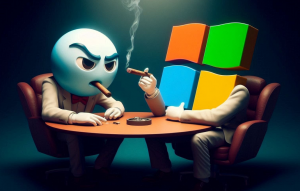Start Button Returns to Windows 8.1 + Other Misses Microsoft Should Fix
![]() Remember when Microsoft removed the Start button on Windows 8 last year? Customers and analysts alike were less than thrilled with such a departure from the familiar Windows experience, and Microsoft is listening. When the software maker releases Windows 8.1 on October 18th there will be the Windows-standard Start button, The Verge reports this morning. With this, Microsoft is addressing some of the usability issues they faced with the initial release of Windows 8, on a steady path to correct the curve.
Remember when Microsoft removed the Start button on Windows 8 last year? Customers and analysts alike were less than thrilled with such a departure from the familiar Windows experience, and Microsoft is listening. When the software maker releases Windows 8.1 on October 18th there will be the Windows-standard Start button, The Verge reports this morning. With this, Microsoft is addressing some of the usability issues they faced with the initial release of Windows 8, on a steady path to correct the curve.
In Windows 8.1, the latest OS update also includes a boot-to-desktop option, as well as the ability to disable hot corners. The Start button is once again a permanent fixture in the Windows experience, so there’s no option to switch off there.
And it seems things are already looking up for the Redmond company, as Microsoft’s head of marketing, Tami Reller, revealed at Intel’s Developer Forum that the company’s August activations for Windows 8 were the highest so far. Both the new school year and the upcoming holiday season are opportune times for Microsoft to throw marketing dollars at Windows 8, particularly for the new Surface Pro 2 (see how it compares to the current version of the iPad, here).
Read More! Surface Pro 2 vs. iPad 4
So while Microsoft looks to right the ship with ongoing fixes to the seemingly troubled Windows 8 operating system and boost sales, they aren’t out of the woods yet. There are two other pain points Microsoft has the opportunity to address — mobile and music.
Other Misses Microsoft Should Fix
.
- Mobile
During his era at Microsoft, CEO Steve Ballmer originally mocked the idea of smartphones in general, but let’s just look at where Apple is now compared to Microsoft – the latter is still struggling to mark its dominance in the mobile market, while Apple maintains a lead in hardware sales.
Missing out on buying Blackberry didn’t help any part of Microsoft’s mobile woes, though the tech giant has big plans for a closer mobile device maker, Nokia. The Finnish handset manufacturer is being acquired by Microsoft for over $7 billion in a deal that will hopefully benefit both parties.
- Music
Apple’s saving grace was the iPod and its iTunes store, as it allowed users to legally download music to enjoy on demand. At the time of Apple’s revival, Microsoft was still focused on being a software company. Though it had the right software to rival Apple, the MP3 players it had to offer weren’t nearly as cool as the iPods from Apple. Microsoft Xbox Music launched in 2012 but with little fanfare — most of Xbox Music’s features are already available on other cloud music services.
Ballmer is often called out for his “crazy” antics, some saying they boosted Microsoft morale, while others just laughed him off. But Ballmer’s personality aside, the CEO has seen a few opportunities pass by, from Microsoft’s OS to its cloud-based consumer tools, enterprise-ready mobile solutions and a music marketplace.
Though Microsoft is busy putting together the many pieces of its puzzle, time is not on Microsoft’s side.
A message from John Furrier, co-founder of SiliconANGLE:
Your vote of support is important to us and it helps us keep the content FREE.
One click below supports our mission to provide free, deep, and relevant content.
Join our community on YouTube
Join the community that includes more than 15,000 #CubeAlumni experts, including Amazon.com CEO Andy Jassy, Dell Technologies founder and CEO Michael Dell, Intel CEO Pat Gelsinger, and many more luminaries and experts.
THANK YOU













